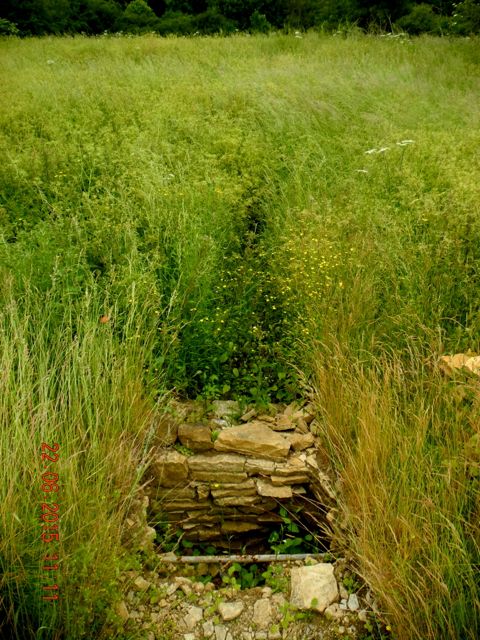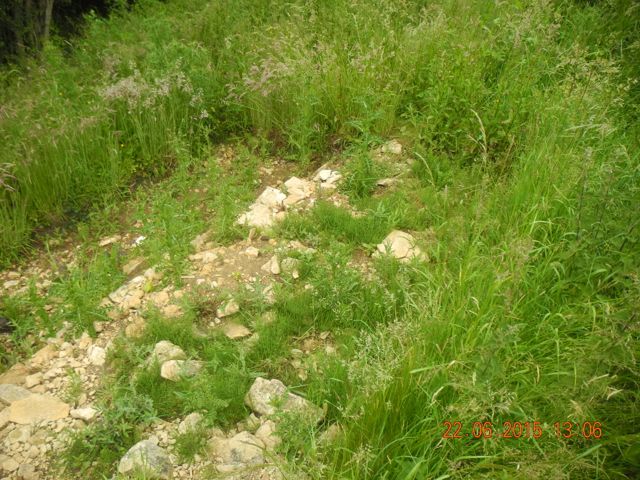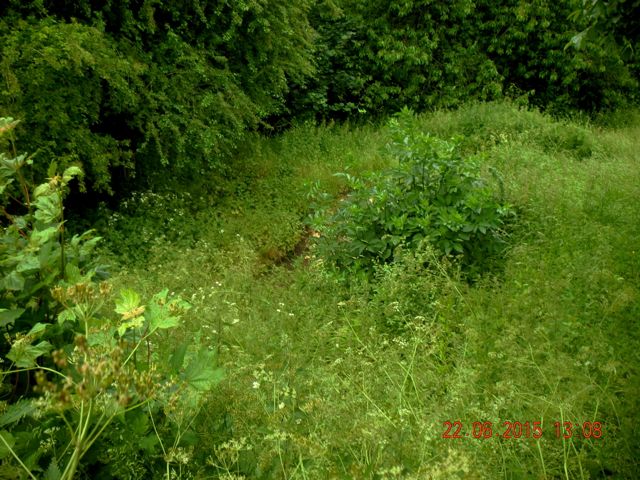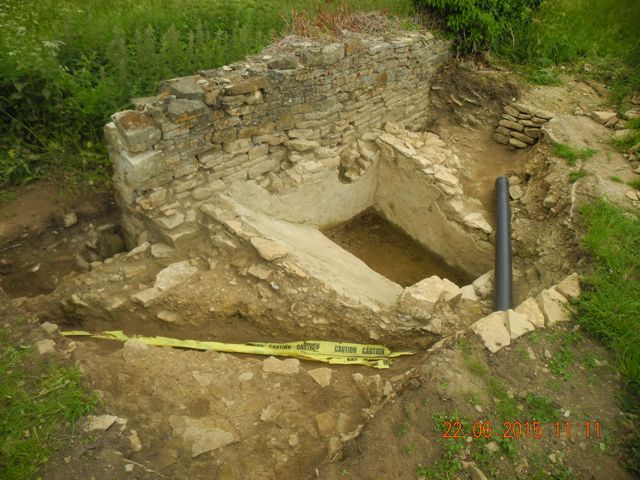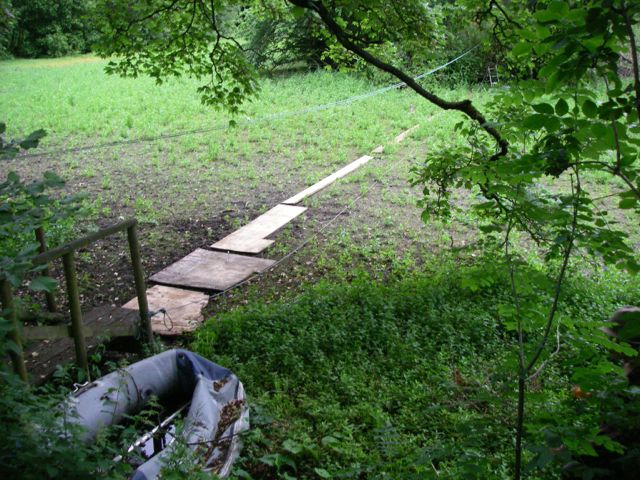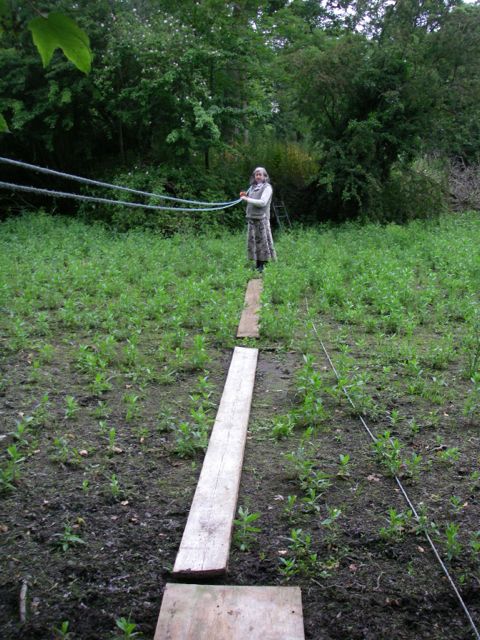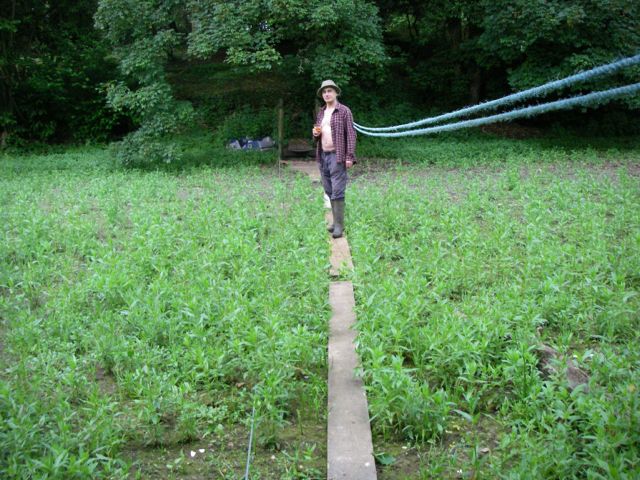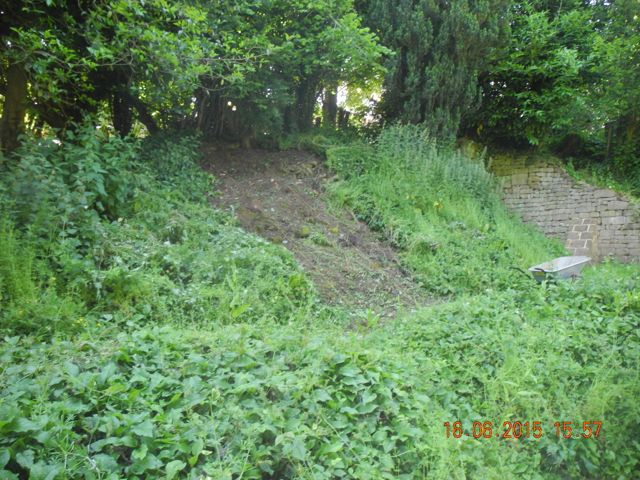
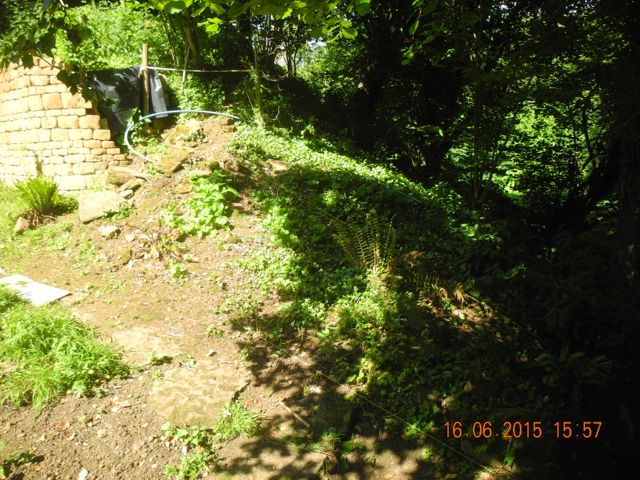
the new areas in the Sunken garden marked out and ready to go: HANI (W) and HANI (E)
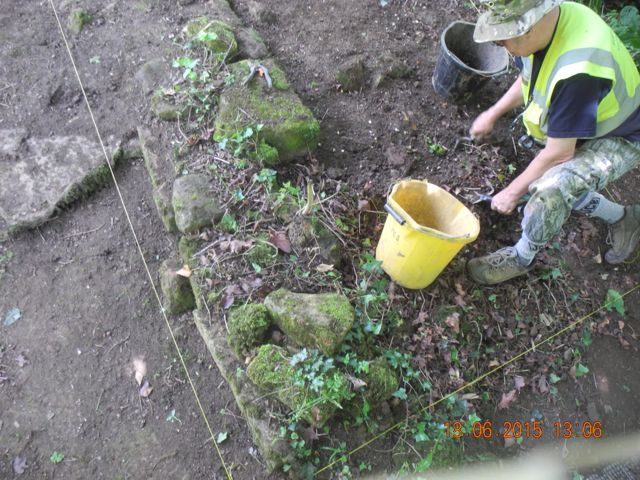
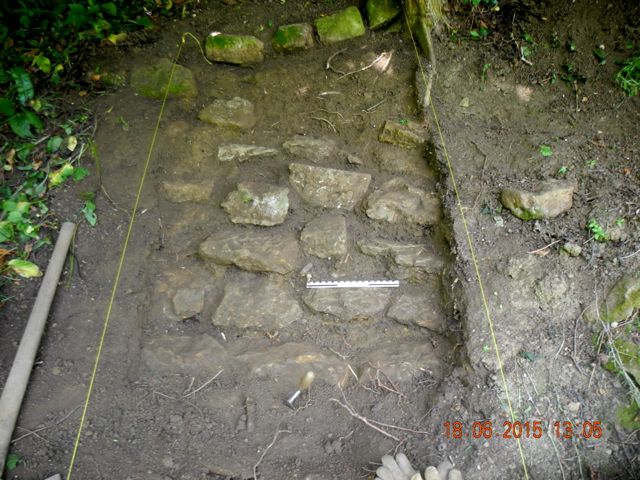
As Peter clears the overburden the dimensions of the wall become
clearer and on top of the bank and packed stone revetment, no
walling yet.
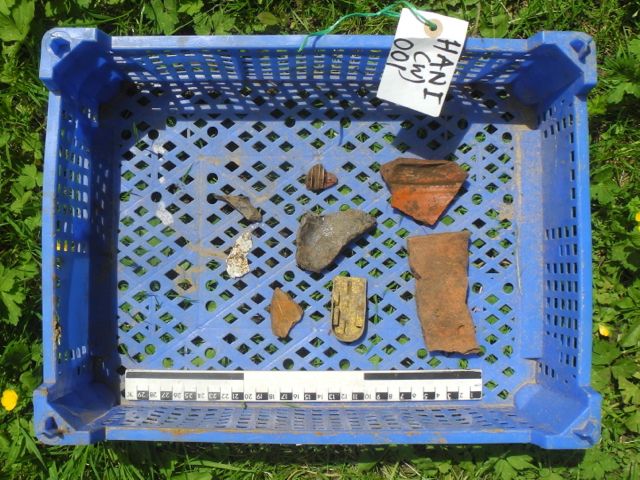
And here's the first bunch of finds from HANI (W) 001: medieval pot, seventeenth century glass and a matchbox toy, typical.
One of the great benefits of the Internet is it gives a
platform to a whole world full of collectors who document, often in
meticulous detail their particular passions. So here we have the
specifications for the toy illustrated above and a date range: 1967 -
1970 as near as you could wish, pity this doesn't work for all our
finds.
|
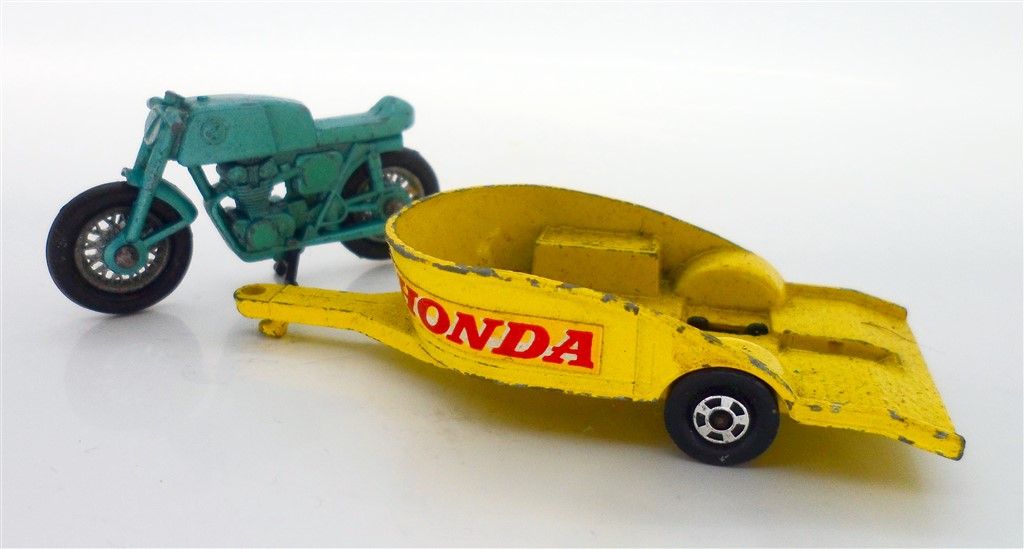
|

|
 |
And then one evening Rowena and Christopher were moved to make the crossing to the island by walking the plank(s) and why not?
Back at Enstone I had been looking at
Peter's excellent notes then examining the site first hand and came to
a strategic decision that this exposure of wall and associated
foundations really did merit further study and publication. We were
left with the surface pretty well as the digger had left it so a
thorough clean up of exposed deposits was started prior to a massive
programme of wall elevation and plan drawing. I finished the cleaning the following week and photographed general views from a multitude of angles and heights.
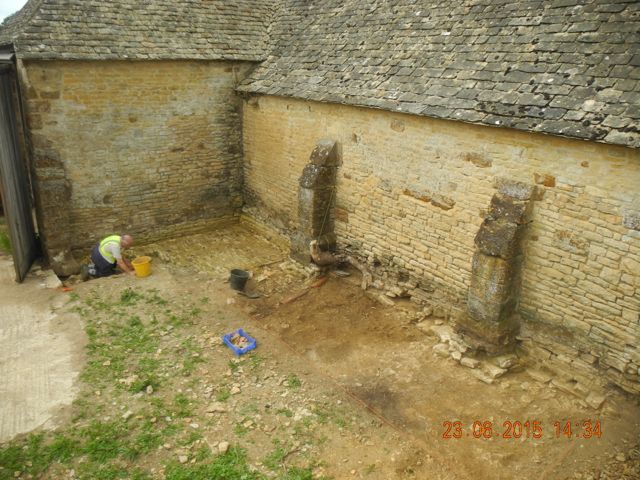
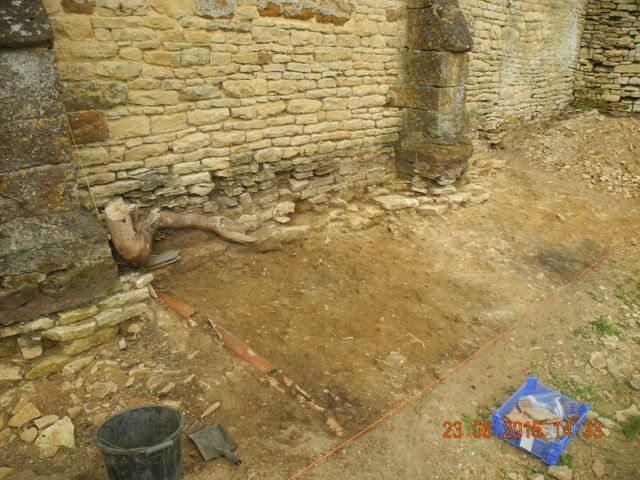
The eastern face of the northern half of the barn, general views looking south west and north west
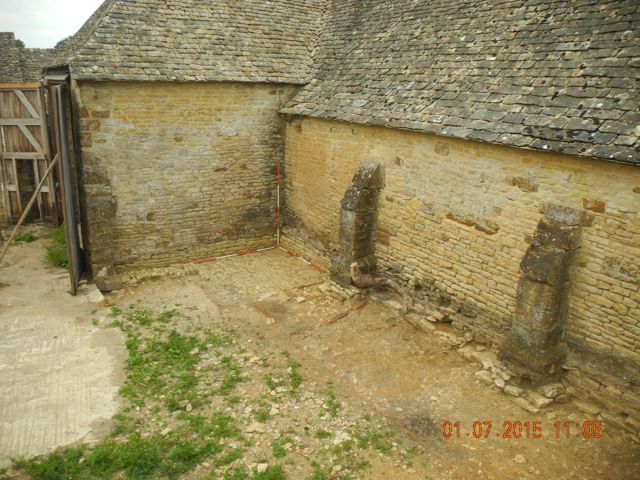
The work is done, the recording remains.
Back at Hanwell I was keen to walk
the plank and re-establish contact with the island. Once there I
continued on the programme of clearance that was already underway by
weeding the area in and around Sir Anthony's Bath. Then after further
clearing and rolling the odd tree trunk out of the way I was able to
mark out the trench for the fourth of this year's big dig areas. In
this instance we are planning to examine the perimeter of the island
for evidence of erosion and to try and determine where the original
edge was. Could be quite challenging!
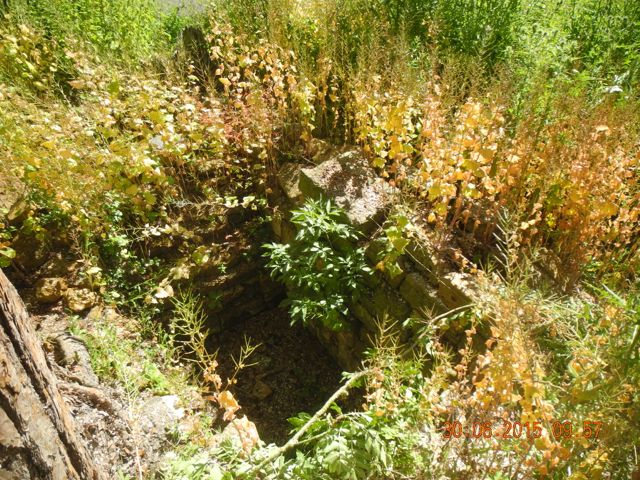
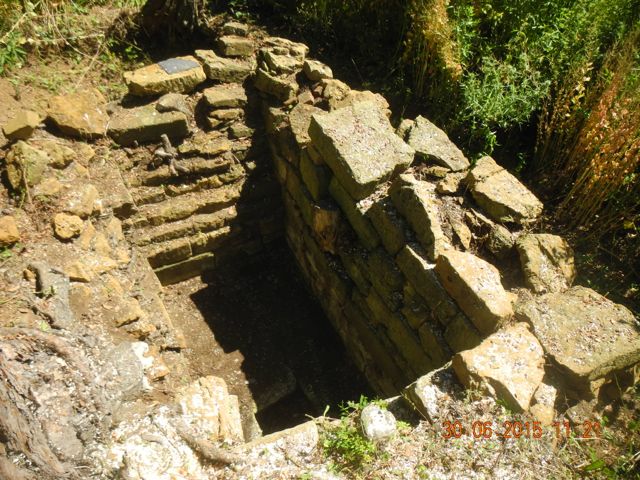
Yes another before and after, Sir Anthony's Bath looking north east.
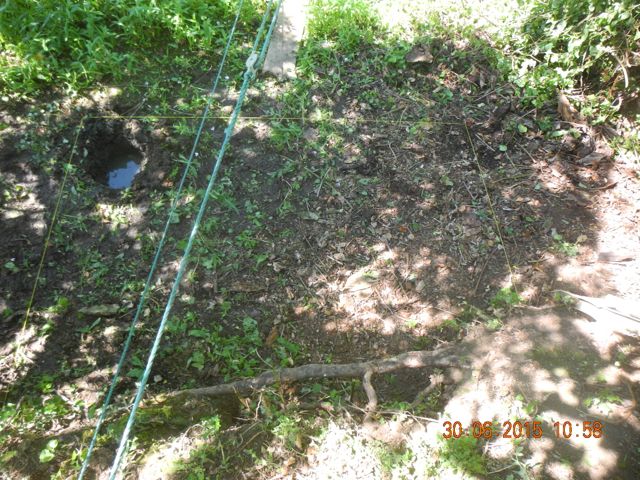
... and a brand new area HANJ on the southern edge of the island, the
test pit in the corner was to investigate how far we could go before
striking water and to start to create a kind of sump for bailing out.
